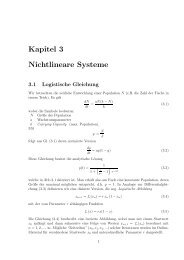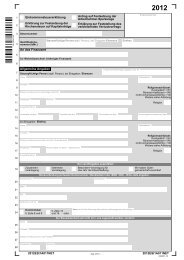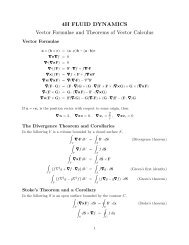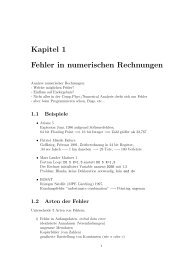Electromagnetic Waves
Electromagnetic Waves
Electromagnetic Waves
Create successful ePaper yourself
Turn your PDF publications into a flip-book with our unique Google optimized e-Paper software.
Linear and Circular Polarization of EM <strong>Waves</strong><br />
The plane wave (6) and (11) is a wave with its electric field vector always<br />
in the direction ɛ1. Such a wave is said to be linearly polarized with<br />
polarization vector ɛ1. The wave described by (12) is linearly polarized<br />
with polarization vector ɛ2 and is linearly independent of the first.<br />
The two waves :<br />
E1 = ɛ1E1e i k·x−iωt , E2 = ɛ2E2e i k·x−iωt<br />
with (17)<br />
Bi = √ µɛ k × Ei<br />
, i = 1, 2<br />
k<br />
Can be combined to give the most general homogeneous plane waves<br />
propagating in the direction k = kn,<br />
E(x, t) = (ɛ1E1 + ɛ2E2) e i k·x−iωt<br />
E(x, t) =<br />
(18)<br />
<br />
ɛ1|E1| + ɛ2|E2|e i(φ2−φ1)<br />
e ik·x−iωt+iφ1 (19)<br />
The amplitudes E1 = |E1|e iφ1 and E2 = |E2|e iφ2 are complex numbers in<br />
order to allow the possibility of a phase difference between waves of<br />
different polarization.<br />
<strong>Electromagnetic</strong> <strong>Waves</strong>

















